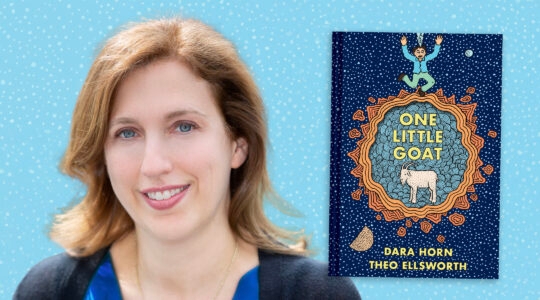Quick, what’s the fastest growing part of the Jewish community, or at least the New York metro area’s Jewish community? Orthodox? They’re growing, but not the fastest. Conservative? Nah. Reform? Not anymore. Reconstructionist? Nope.
According to the recently released study of the NY Jewish community, the group that has doubled its share of the community, growing from just 15% to a whopping 37% is [drum roll, please]…OTHER. That’s right, “other”. [Source: Jewish Community Study of New York, page 121].
Are you an old school thinker about the Jewish community? Guess what? Over 1/3 of the Jews in New York don’t fit into the categories that you have been using to describe Jews and Judaism. These categories, which were born during the period from the early 19th century through the middle of the 20th century, are in decline. Realistically, the terms “Reform”, “Conservative”, “Orthodox” and “Reconstructionist” never referred to all Jews. They are descriptions of religious Jews. And even at that, they apply mostly to Ashkenazi Jews who have been in North America for more than a generation. The categories always left out a significant chunk of Jewish life (and creativity). According to the New York study, these categories now leave out a full 37% of all Jews!
So, who are these “others” and what should the community do about the trend? According to the study, “other” includes those who describe themselves as:
- Just Jewish
- Sephardi
- Traditional
- Cultural
- Secular
- Not Religious
- Post-Denominational
- Trans-denominational
I would also suggest that these other folks might be among the “other”:
- Israeli born Jews, most of whom have little use for the American denominational labels
- Jews from families that emigrated from the former Soviet Union, most of whom have no use for the denominational labels
- Jews whose connectedness is through social justice or political activism
- Jews who have not yet found a Jewish community that fully accepts them: LGBT Jews, Jews of color
- Jews who are aboard the Do It Yourself Judaism train. They are individualistic and want to set their own Jewish path
- Jews who consider themselves to be “spiritual” and wrestle with how that spirituality – which is absent from many Jewish organizations and synagogues – blends with their Jewish identification.
- Many alumni of programs such as and others, who have discovered their Jewish voices, but still search for the best place to express them.
Admittedly, “other” is not a unified category; it is a hodge podge of my fellow American Jews. I also admit that I personally have defined myself as either “just Jewish” or “post-denominational” for at least the past 20 years, meaning that I, too, am “other” (not a big surprise to those who know me).
Yet I can’t help thinking that there is some common thread that might hold many in the “other” category together as the community looks to embrace its “members”. A conversation needs to begin about the “other” in the Jewish community. I suggest we begin with the following:
- 37% of Jews falling outside denominational lines means that the way we have categorized Jews in the United States is becoming less relevant. Whether that means the organized movements themselves are less relevant is yet to be determined. But without significant change in the movements, the number of those who define themselves outside these religious movements will continue to grow.
- There are not four Jewish religious movements in the United States, there are 6.5 million. Increasingly, Jews feel the desire and the right to create their own personalized expression of their Jewish lives. This requires rabbis and other Jewish communal professionals and leaders to see themselves as coaches rather than authorities in their work.
- The old distinction between “religiously Jewish”, “secular Humanist Jew”, and “cultural Jew” is a poor attempt to simplify the complex journey that most Jews are on. As has been shown by studies like that of Bethamie Horowitz in 2000 (Connections and Journeys), Jewish lives do not proceed in a linear fashion. We develop and change through the course of our lives, including traveling back and forth along a continuum that includes religious and secular and many points in between.
- Our Jewish brothers and sisters will not define their Jewishness by the organizations to whom they pay (or don’t pay) dues. Having said that, organizations and synagogues are by no means irrelevant. To remain relevant, synagogues and organizations need to create safe “sandboxes” in which people can get support as they map out their Jewish journeys.
The growth of the “other” in our Jewish community is not a problem…yet. It is an expression of a changing Jewish people and an opportunity for us to respond in creative ways in building a Jewish future.
Rabbi Arnold D. Samlan is Founder of Jewish Connectivity, a Jewish Life Coaching and consulting practice.
The New York Jewish Week brings you the stories behind the headlines, keeping you connected to Jewish life in New York. Help sustain the reporting you trust by donating today.




